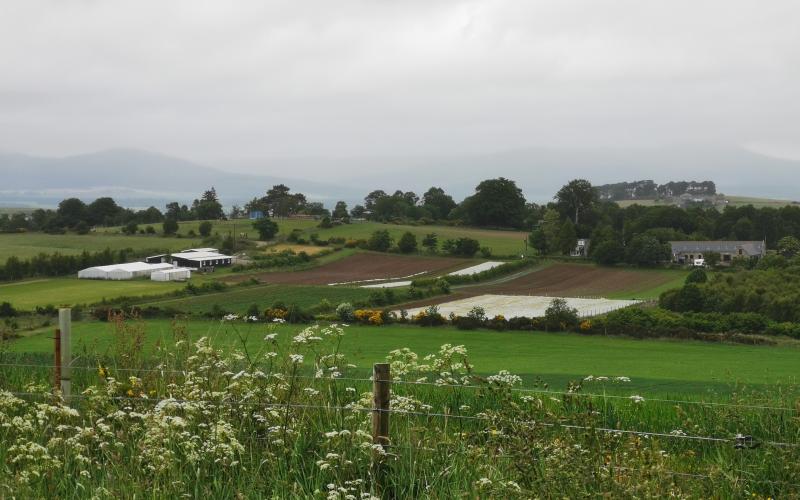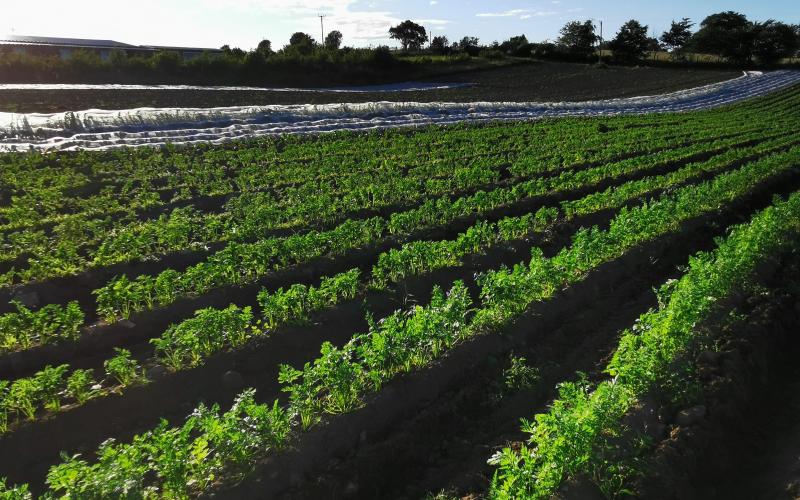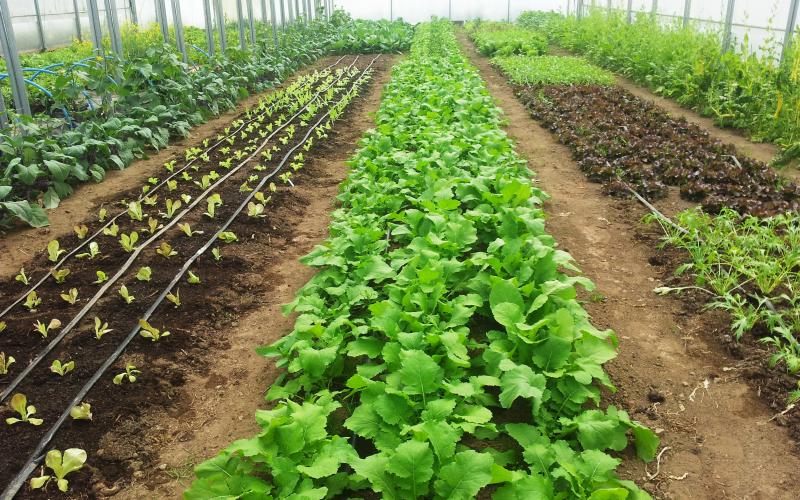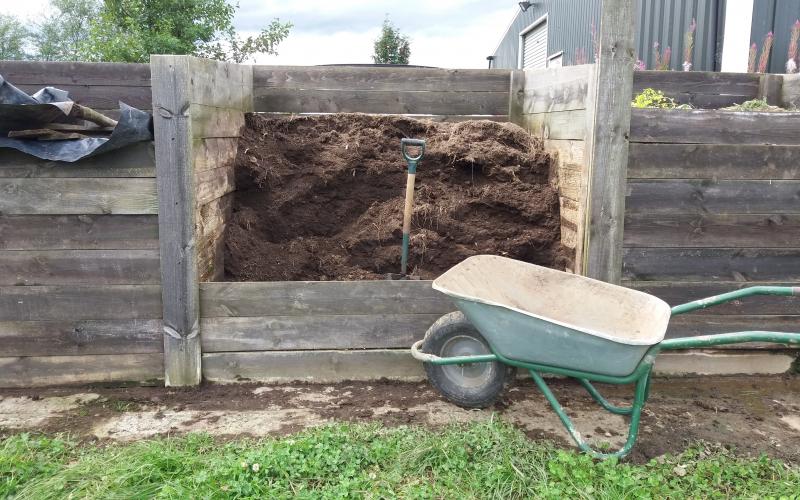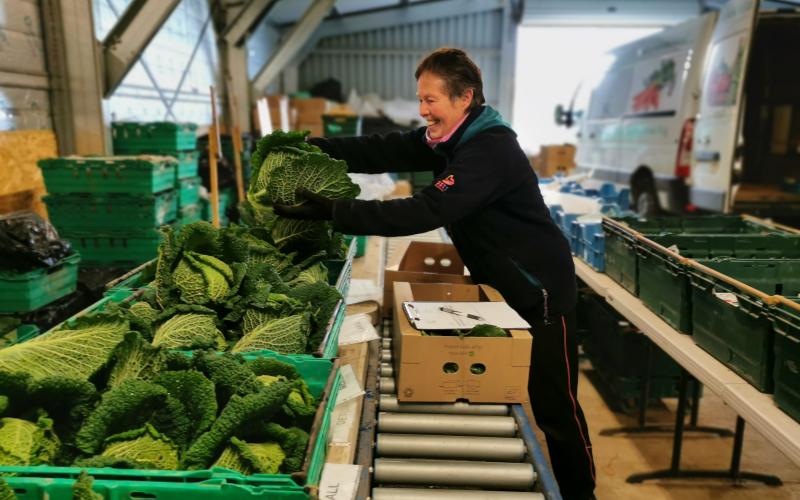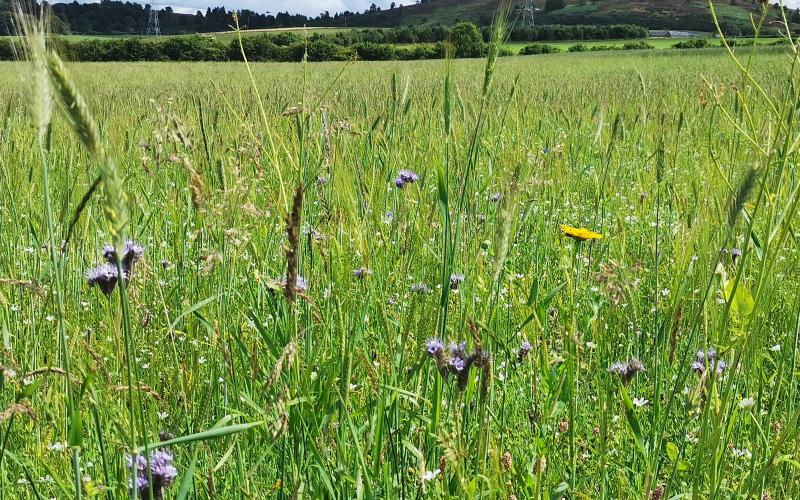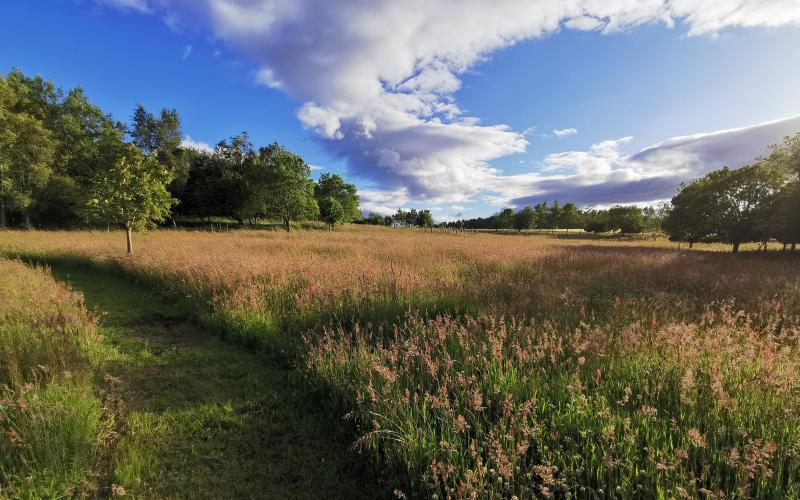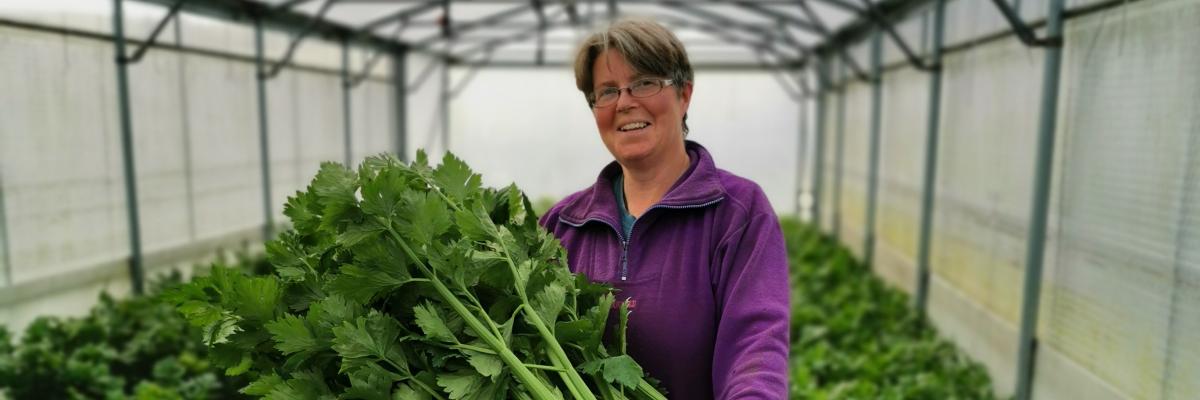
Wendy Seel
Grower
|
Listen here
|
Wendy Seel set up Vital Veg with her partner Anne Taylor in 2005 on their farm North Tillydaff, 16 miles west of Aberdeen in north east Scotland. They grow a large number of different types of vegetables for their box scheme Vital Veg. They are “organic, grown with nature, small scale and local.” The vegetable cropping is just under 10 acres and is part of a larger 130 acre farm - 50 acres are young mixed native woodland, 5 are unharvested crops for winter birds, and the remainder are grass (grazing for both cattle and sheep, hay and silage) and cereals. The grass and cereals are currently let or sold as standing crop. They are just starting to use controlled grazing with Shetland cattle to improve the woodland understory. Grampian Graziers are providing the cattle and the expertise.
Alongside the field vegetables, they also have about 400 square metres of protected cropping, where they grow leafy salads, cucumbers, and other crops to help fill ‘the hungry gap.’ The growing system in the field is based largely on a 5-year rotation; the 10 acres are divided into 5 blocks, with the bigger crops on a 5-year rotation, and smaller crops such as leeks on a 15-year rotation. Within the 5 year rotation, 2 years are fertility building; grass and clover leys are increasingly mixed with flowers for pollinators, and they do as much undersowing of crops as they can - any bare patches are sown with mixtures of legumes and plants that are good for pollinators.

- Wendy explains that they try to get as much diversity (growing numerous different varieties of potatoes, leeks kale etc.), and as much variation in time, space and variety as they can. Trees and hedgerows are central to the design and function of the farm.
- Wendy talks about her increased appreciation for weeds, which have proven to be particularly useful for providing winter ground cover if a green manure fails, but also provide a good food source for wild birds. “I’m increasingly growing 2 crops - one for our customer and one for our wildlife.”
- She talks about their “whole farm approach,” describing the all-important design of the farm - which has evolved around the vegetables to protect them and to provide the services they require in terms of pollinators and predators of pests.

- She explains that part of the strategy on the farm is to have as many edges as possible, “where all the most important allies of the organic farm live,” so they have an increasing number of hedges and strips of wildflowers and longer grasses to provide habitats for different creatures and insects, above and below ground.
- In addition to the habitats, the trees provide important shelter from the wind, helping with the establishment of vegetables, and they are experiencing progressively less damage from flooding due to the trees, hedges, shelter belts and woodland. Rowan berries, elderberries, hazel, roses (rosehips) and crabapple (an important hedgerow component for flowers and fruits to pick) also provide an income.
- Wendy talks about some of the challenges of the farm in relation to the agroforestry and emphasises the importance of the design which was focused on providing the greatest chance of building a natural system.
- She explains her background, how Vital Veg came about, and how she’d like to see the way they farm develop in the future, continuing their ethos of “better not bigger.”
|
FARMER TIPS
|
Wendy would like to thank the Scottish Government for help establishing the woodland, the Woodland Trust for help with hedges and shelterbelts, and The Habitat People for whole-farm wildlife guidance.
*Wendy and Anne are looking for a new custodian for Vital Veg. If you are interested, please get in touch.*
All photos courtesy of Wendy Seel. All Rights Reserved.


